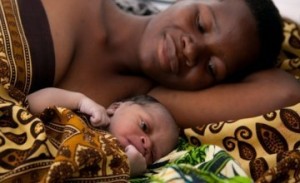 In November, the United Nations Population Fund released their “State of World Population 2012: By Choice, Not By Chance – Family Planning, Human Rights and Development,” which stated:
In November, the United Nations Population Fund released their “State of World Population 2012: By Choice, Not By Chance – Family Planning, Human Rights and Development,” which stated:
“Recent statistics show that 867 million women of childbearing age in developing countries have a need for modern contraceptives. Of that total, 645 million have access to them. But a staggering 222 million still do not. […] The remaining 222 million women have an unmet need for contraception.”
According to the UNFPA, 100% of “unmet need” for contraceptives is attributable to lack of access. But is that really true? The facts say otherwise.
In 2011, the Guttmacher Institute released a report in which they surveyed women in developing countries to find out exactly why their “need” for modern contraceptive methods was still “unmet.” They focused on three regions: Sub-Saharan Africa, South Central Asia, and Southeast Asia, which account for almost 69% of the “unmet need” in the developing world.
![[Source: Darroch, Jacqueline E., Sedgh, Gilda, and Ball, Haley. “Contraceptive Technologies: Responding to Women’s Needs.” Guttmacher Institute. April 2011]](http://www.catholiclane.com/wp-content/uploads/guttmacher-graph-contraceptives.jpg)
[Source: Darroch, Jacqueline E., Sedgh, Gilda, and Ball, Haley. “Contraceptive Technologies: Responding to Women’s Needs.” Guttmacher Institute. April 2011]
The authors next subdivided the graph into two groups: one they characterized as “concerns that can be resolved with use of appropriate methods,” and a catch-all group containing everything else. They notably included “partner opposed” within the first group with this explanation:
“We assume that these reasons for non-use could be addressed by providing women with a method that could be used without partners’ or others’ knowledge.”
Then the authors took the catch-all group and lumped its four subcategories together under the new heading “access-related and other concerns.” This name choice is odd because it refers to the second-largest subcategory (no access/high cost) rather than the largest (woman opposed), but it was certainly not unintentional. By mere sleight-of-hand, Guttmacher has elevated that 8% (no access/high cost) to 29% (access-related and other concerns). The new, combined category is now the largest single piece of the pie. Never mind that over half of that 29% would not use contraceptives regardless of accessibility.
![[Source: Darroch, Jacqueline E., Sedgh, Gilda, and Ball, Haley. “Contraceptive Technologies: Responding to Women’s Needs.” Guttmacher Institute. April 2011]](http://www.catholiclane.com/wp-content/uploads/guttmacher-graph-contraceptives2-e1369766677579.jpg)
[Source: Darroch, Jacqueline E., Sedgh, Gilda, and Ball, Haley. “Contraceptive Technologies: Responding to Women’s Needs.” Guttmacher Institute. April 2011]
Why would the UNFPA focus so much of their attention on an issue affecting only 8% of the women they mean to target? Simply put, their glossy reports are intended for policymakers representing donor countries. If you’re asking for billions of dollars for family planning – $8.1 billion a year, to be exact – it’s easier to make your case in terms of providing access to one’s basic human rights than in terms of foisting contraceptives on women who are skeptical of their effects or opposed to them on principle.



